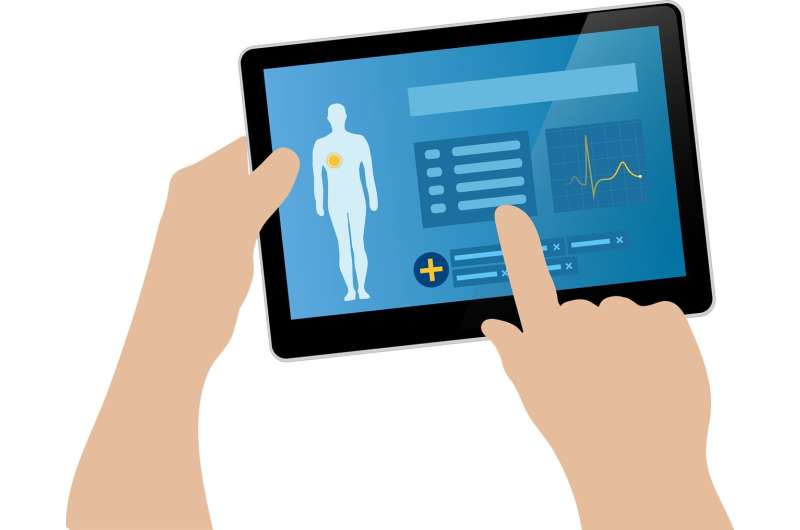Telemedicine use disparity during COVID-19 among head and neck cancer patients

The use of telemedicine services has shown to be exceptionally effective in meeting the health care needs of patients throughout the COVID-19 pandemic. But an analysis by Henry Ford Health System found that socioeconomic factors may affect certain patient populations on how they use the technology for accessing care.
In a Research Letter published in the Journal of the American Medical Association's Otolaryngology—Head and Neck Surgery, Henry Ford researchers report that head and neck cancer patients who were low-income, on Medicaid or uninsured were more likely to complete a virtual visit by telephone rather than by video. They also said women with a lower median household income were less likely to complete a telemedicine visit than men in the same income bracket.
Researchers said further study was needed to explain patients' reticence with completing a video visit, which provides a more comprehensive health care assessment than a phone call with their doctor. "While virtual care may provide a promising platform for expanded access to care in some patients, it must be implemented in a way that it doesn't create barriers to already disadvantaged patient populations," said Samantha Tam, M.D., a study co-author and otolaryngologist in Henry Ford's Department of Otolaryngology—Head and Neck Surgery.
The pandemic-driven need for accessing care using telemedicine services prompted researchers to evaluate whether socioeconomic factors impacted a patient's ability to receive virtual care. In their retrospective study, they analyzed census-based socioeconomic data of head and neck cancer patients who had a telemedicine visit between March 17 and April 24, 2020 and compared the results to a similar cohort from the same time frame in 2019.
Data included patients' age, sex, race, insurance status, household income, education, marital and employment status, and English-speaking households. Patient visits were categorized by virtual visits using live audio and video, visits completed by telephone only, in-person visits and no-show or canceled visits.
Data from 401 patient encounters during the 2020 study period was collected. From those numbers, 346 encounters (86.3%) were completed by 234 patients. In-person visits consisted of 87 patients (25.1%), 170 (49.1%) were virtual visits and 89 (23.6%) were telephone visits. In comparison, the 2019 study found 551 of 582 visits (94.7%) were completed by 394 patients, with no telemedicine visits completed that year.
"We know that access to smartphones and video technology is not universal but almost everyone has access to a telephone," said Vivian Wu, M.D., a study co-author and otolaryngologist. "As virtual care expands during and after this pandemic, we must keep in mind that a phone call remains an important communication method for patients to talk to their doctor."
Since the retrospective study was observation-based, the research team did not evaluate whether patients had access to mobile "smart" phones and internet connectivity.
More information: Samantha Tam et al, Disparities in the Uptake of Telemedicine During the COVID-19 Surge in a Multidisciplinary Head and Neck Cancer Population by Patient Demographic Characteristics and Socioeconomic Status, JAMA Otolaryngology–Head & Neck Surgery (2020). DOI: 10.1001/jamaoto.2020.3052


















